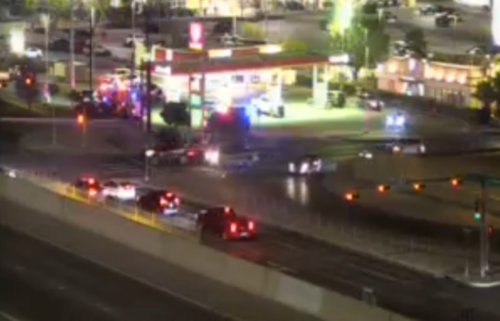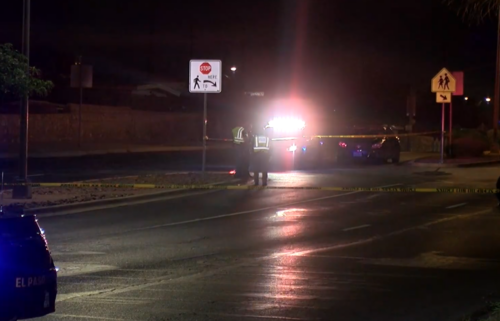How the extreme-right gamified terror
It was an eerily familiar scene. A gunman livestreaming an attack on a head-mounted camera, in the style of a first-person shooter video game, and uploading it along with an extremist tirade.
The parallels between the attack on a synagogue in the German town of Halle and other recent far-right shootings points to a wider trend: the gamification of terror.
Looked at together, some analysts say the atrocities in Christchurch, New Zealand; Poway, California; El Paso, Texas; and Baerum, Norway, paint a picture of a growing terror network with roots in alt-right culture and online safe havens, not just isolated events carried out by people holding similar beliefs.
“Notably, all attackers seem to be influenced by the violence enticing extreme-right/incel [involuntary celibates] nexus found on certain threads in forums such 8Chan, 4Chan. In addition, gaining recognition and appraisal from likeminded forum users/anons seems to be an important motive,” Jacob Aasland Ravndal, a postdoctoral fellow at the Center for Research on Extremism (C-REX) at the University of Oslo, told CNN by email.
“All of this suggests that not only ideology but also emotions and (failed) social relations, as well as the gamification of real-life mass-shootings, need to be taken into account when trying to understand these attacks.”
The Halle attacker broadcast his assault live on Twitch, a platform owned by Amazon that is primarily used for streaming video games. A recording of the stream was viewed by approximately 2,200 people in the 30 minutes before the video was taken down, according to Twitch, which said many of those who shared it coordinated on online messaging services.
“Twitch has a zero-tolerance policy against hateful conduct, and any act of violence is taken extremely seriously,” the company said in a statement.
Speaking in English, the Halle attacker introduced himself in the video as “Anon” and said he was a Holocaust denier. He blamed feminism for low birth rates in the West, which he attributed to mass immigration, adding that “the Jew” was the root of these problems.
A manifesto circulating online that is believed to be linked to the attacker outlines his “objectives” using the same language, and makes reference to “achievements” like hosting “a successful livestream” in a nod to gamer language.
The goal of his proclamation? According to researchers specializing in far-right extremism and radicalization, the aim of this type of rhetoric is to play on cultural reference points to encourage young, alienated men to carry out copycat attacks. The far-right online influencers promoting this strategy aren’t party to one specific cell, organization or group, but have become embedded in a cultural milieu of fringe platforms in which people inspire and instruct each other.
The way the attack was carried out and announced on message boards like 4chan seemed to suggest that the gunman had been anointed successor to 28-year-old Australian citizen Brenton Tarrant, who allegedly carried out the deadly mass shootings at two New Zealand mosques in March.
CNN has reached out to 4chan for comment regarding the reposting and sharing of content related to both attacks. It has not responded to previous request for comment.
In his 87-page white nationalist manifesto, the New Zealand attacker referred to his desire to “beat his high score” — in other words, kill as many people as possible. The suspect, who is accused of killing 51 people, also streamed the attack live on Facebook in a first-person-shooter fashion.
“The video itself is clearly inspired and nodding to the Christchurch attacker first and foremost,” Jacob Davey, a researcher at the Institute for Strategic Dialogue (ISD), a UK-based counter-extremist organisation, told CNN.
In the immediate aftermath of the shooting in Halle, image and message boards were awash with comparisons to the New Zealand attack. In chilling posts across message boards and encrypted chats, anonymous trolls criticized the Halle gunman for not killing more people.
“Even people criticizing the attacker shows how these attacks have become gamified — their criticism was that his score wasn’t high enough. That’s the way these people think, that these attacks are to be consumed, scored and dissected like a video game,” Davey said.
The use of gaming language, manifestos, livestreams and posts to platforms such as 4chan and 8chan, the internet message board taken down for serving as a home to racist and misogynist content, is intended to tap into far-right communities, to inspire them to pick up the torch and carry on a wider white nationalist mission.
That extremist mantle was adopted by the gunmen who carried out mass shootings at a synagogue in Poway, California, and a Walmart in El Paso, Texas. Both released manifestos trafficking in white nationalist and anti-immigrant themes, which were posted to 8chan. The shooter in Poway reportedly tried to livestream his attack on Facebook, but failed to do so.
According to Davey, who co-authored a report on the extreme right-wing ideology that inspired the Christchurch mosque killer, these attacks are designed for a niche online audience, to encourage a race war.
His report, which was released by the ISD in July, found that far-right networks are increasingly pushing extreme-right concepts such as the “great replacement” and “white genocide,” once-obscure conspiracy theories that white people are at risk of being wiped out through migration and violence.
Several analysts say those concepts have come together in an increasingly transnational movement across the English-speaking world.
Valerio Mazzoni, a terror analyst with Italian consultancy IFI Advisory, which has launched a new project to track and monitor online extremism, pointed to the Halle attacker’s use of language as proof of that.
“The Halle attacker, despite his German nationality, spoke in English during the video and wrote the manifesto in English, aiming to internationalize the cause, not limited to his country,” Mazzoni said.
Mazzoni said the manifesto was shared in far-right chats on encrypted apps October 9, the day of the attack, at around 5 p.m. local time (12 p.m. ET). From there, it spread to various extremists’ groups.
“We spotted it on an alt-right chat named Slovak War. Then it was shared among other prominent chats and groups aligned with this ideology, such as TerrorWave, Hans Right Terror Wing, Inner Totenkvlt and so on,” Mazzoni said.
Since the Christchurch attacks, Mazzoni’s team and others have been dedicated to monitoring the rise of international groups and chats linked with this ideology, which follow the example of alleged New Zealand gunman.
Jacob Aasland Ravndal, with C-REX, says that Christchurch triggered a copycat process “unlike anything we have seen before.”
Many researchers were worried about copycats following the 2011 Norway terror attacks carried out by Anders Behring Breivik, yet few emerged. But the digital landscape has changed drastically since then, something that Ravndal attributes, at least in part, to the rise of extreme-right violence and radicalization.
“In his manifesto, Tarrant spoke directly to his prospective Chan-supporters using coded language and irony,” Ravndal said, adding that this culture didn’t exist at the time of Breivik’s attacks
“Tarrant and the other attackers are part of a new internet-savvy generation more capable and better equipped to cultivate an extremely violent counterculture mainly operating at the transnational level.”




